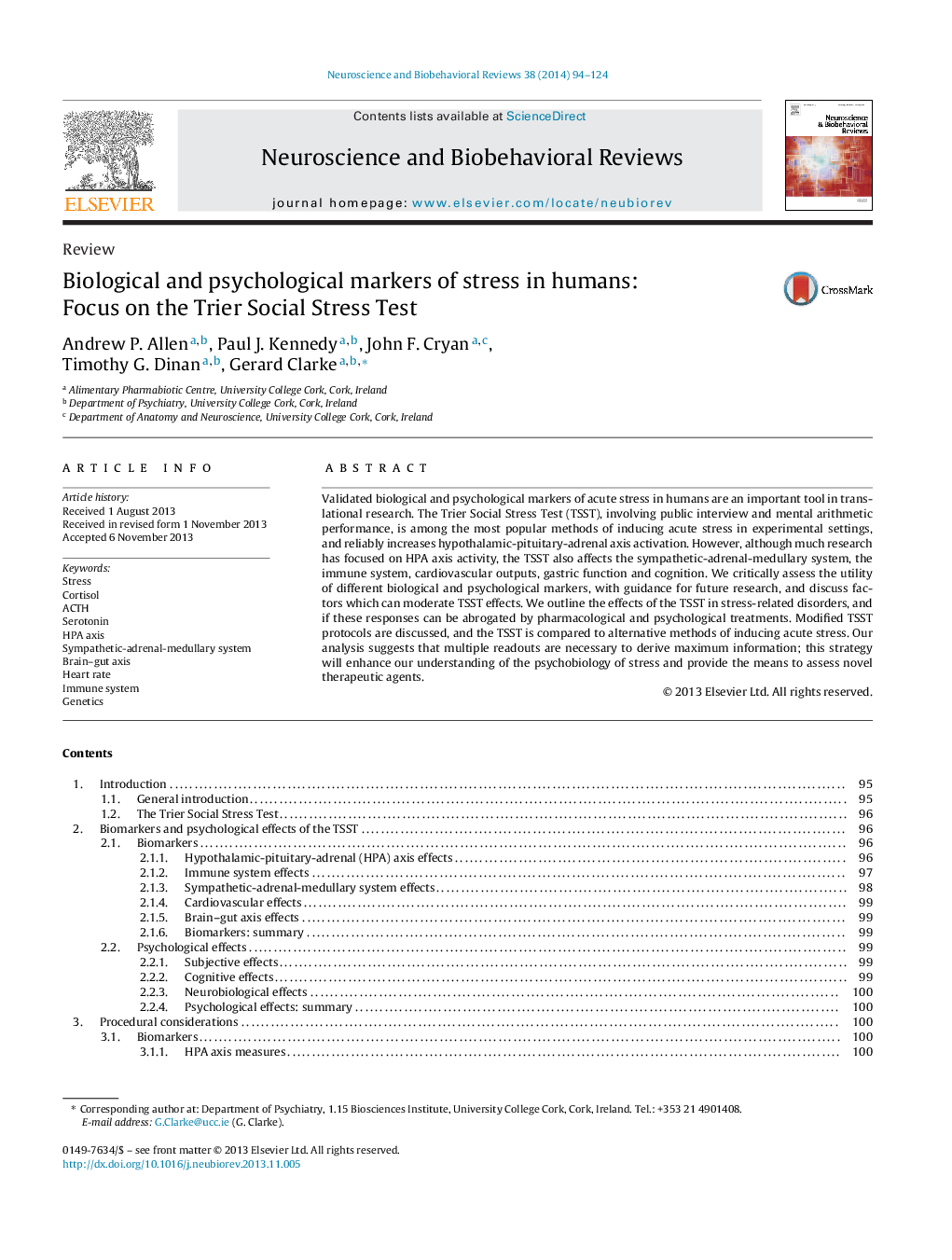| Article ID | Journal | Published Year | Pages | File Type |
|---|---|---|---|---|
| 937752 | Neuroscience & Biobehavioral Reviews | 2014 | 31 Pages |
•The Trier Social Stress Test is a highly reliable method of inducing acute stress.•Salivary cortisol is the most ubiquitous TSST readout and conveys many advantages.•Multiple readouts of acute stress biomarkers are preferable.•Cognitive performance and gastrointestinal function are promising additional TSST readouts.•Modifications of this protocol may facilitate more in-depth study of acute stress.
Validated biological and psychological markers of acute stress in humans are an important tool in translational research. The Trier Social Stress Test (TSST), involving public interview and mental arithmetic performance, is among the most popular methods of inducing acute stress in experimental settings, and reliably increases hypothalamic-pituitary-adrenal axis activation. However, although much research has focused on HPA axis activity, the TSST also affects the sympathetic-adrenal-medullary system, the immune system, cardiovascular outputs, gastric function and cognition. We critically assess the utility of different biological and psychological markers, with guidance for future research, and discuss factors which can moderate TSST effects. We outline the effects of the TSST in stress-related disorders, and if these responses can be abrogated by pharmacological and psychological treatments. Modified TSST protocols are discussed, and the TSST is compared to alternative methods of inducing acute stress. Our analysis suggests that multiple readouts are necessary to derive maximum information; this strategy will enhance our understanding of the psychobiology of stress and provide the means to assess novel therapeutic agents.
